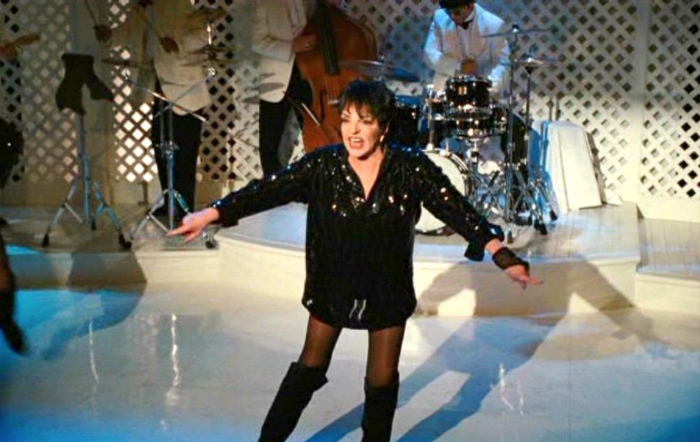For whatever reason, “Single Ladies (Put A Ring On It)” remains one of Beyoncé’s biggest hits despite the fact that it is one of her most vexing songs. Not just sonically, but because she was a married woman at the time (and still is despite Jay-Z’s philandering antics) prattling on about the empowerment of being single, of no longer being at the mercy of a man she was in a long-term relationship with who would not, that’s right, put a ring on it. No one was perhaps more annoying in this regard before Beyoncé came along with this cut than Carrie Bradshaw (Sarah Jessica Parker). While the first Sex and the City movie was released the same year as the Bey single, we were spared from it being wielded within the film (which is possibly one of the reasons it’s more watchable than the sequel). Alas, that would not be the case in 2010, when Sex and the City 2 came out to rear its atrocious head.
Being that white folk “embraced” B as “one of their own” more markedly than ever with a song as tailored to basic bitches and their bachelorette parties as this, it could only make sense that the appropriation of the track would reach a complete metamorphosis by being included in the most blanca show of the decade (sure, Friends was also airing in the 00s, but it’s, by and large, grouped into the “90s TV” category).
At the same time, Bey wasn’t guiltless in her own “appropriation” (for yes even “white culture,” as oxymoronic of a term as it is, can be appropriated). And the presence of Liza Minnelli doing her own impersonation of the video and song wasn’t totally random if we thread the line between Bob Fosse and Cabaret to the fact that Bey borrowed Fosse choreography from a 1969 number called “Mexican Breakfast” performed by his wife, Gwen Verdon, for The Ed Sullivan Show.
In spite of this thread so small it’s a practically invisible stitch, the sheer non sequitur nature of the “cameo” is far enough out of left field for even Miranda’s (Cynthia Nixon) slapdash explanation for it– “Any time there’s this much gay energy in the room, Liza manifests”–to make the scenario feel more forced and inexplicably awkward. But that doesn’t stop the scene from being carried forth as Liza takes the stage after presiding over Stanford (Willie Garson) and Anthony’s (Mario Cantone) wedding joined by two much younger backup dancers whose homogenously matched costumes still can’t conceal the fact that Liza is moving a bit slower than they are.
As though to further apologize for the existence of this on celluloid, Miranda is given another line to legitimize what just happened: “Now I know why we got married: so we wouldn’t have to dance to that song at weddings.” And yet, everyone is dancing to it. Every liberal rich blanco on the Eastern Seaboard, it seems. In a sea of vanilla faces and married folk, nary a one of them has the right to dance to what is considered a crowning jewel in Beyoncé’s oeuvre.
One might go so far as to argue that it was precisely because of this haunting addition to white-centric pop culture that Bey chose to run as quickly in the other direction toward her blackness as she could in the years that followed (hence that SNL parody in 2016 about whites finally comprehending that she’s black with the release of “Formation”). If it was, who could blame her?



















